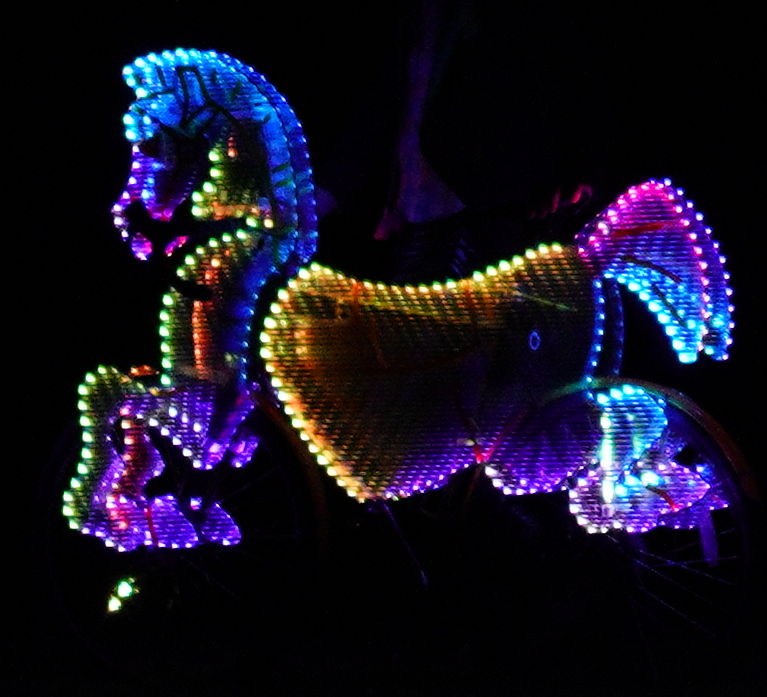Category Archives: Well done!
Bike monuments
Monuments have been using to honor or commemorate somebody or something for ages. Kings, conquerors or discoverers overcrowd them as it comes to persons. Regarding buildings, there is a myriad of them with different architectures across the world. Thus, we are used to seeing them in most cities.
What is more surprising is to come across with a bike monument. This is a structure in which a bicycle appears alone or as part of a sculptural ensemble. As the bike movement develops, more and more bike monuments are built to express the change that society is experiencing. Similarly to queens and kings sculptures, bike monuments constitute what people gives importance.
Perhaps there are more bikers collecting bike monuments, but I only know one person who is truly doing this. In the Bicimonumentos (in Spanish) webpage one can consult bike monuments in a lot of countries. It is impressive realizing that the love for bikes is so widespread. By the way, if you want to send it some bike monuments photos or locations, you can do it by sending a private message to https://www.facebook.com/LaMujerDelTiemp. Also, the blog http://www.salamancaenbici.es/ could receive bike monuments information but I am not completely sure about this last point.
Cycling through water and the trees
Cycle bridge in Heerhugowaard
Less waste grounds
In some pro-car cities, waste grounds are usually occupied by cars. These empty lands appeared as a result of the house bubble crash or because of numbness politicians. The fact is that these areas can be better places for instance by transforming them into public gardens. This way the neighbors’ life quality increases, children can play without risk of being run over, senior citizens can drift around and everybody can play sports. Thus, everybody benefits.
When brave mayors decide to convert waste grounds into gardens, some car drivers normally claim against it due to the fact of losing free parking lots. The most idiot ones argue that as they lose them, they should pay less car taxes. What they do not see, or do not want to understand, is the problems cars cause because of driving or having them. A car is like a weapon. It has been used in the past by terrorist to cause victims, the poison expels by exhaust pipes kills every year hundreds of thousands of people around the globe, thousands more are killed in car crashes and millions probably die because of global warming. Indeed, driving polluting vehicles is the source of 20% of all US emissions (http://www.ucsusa.org/clean-vehicles/car-emissions-and-global-warming#.Wa7nNdRLdAg) or 17% of the UK’s total carbon dioxide emissions (https://www.theccc.org.uk/publication/impact-of-real-world-driving-emissions/).
So, the more green areas, the better quality of life for citizens.
Cycling in Malmö (Sweden)
A different bike line
Riding a bike uses to be a happy activity. If you do it in a park or a forest, then it turns into a relaxed, quiet trip. The relation of bicycles with environment has been deeply studied regarding the avoidance of pollution and the replacement of motor vehicles. As you know, bike lines constitute the specific paths for bikes. It would be ideal if these points could be joint in a unique infrastructure.
It turn out that this building already exist. Genk is a city in Belgium which has made it possible. They were to build a bike line in a park, but faced a problem: How to cross a lake. Engineers thought over it with the intention of integrating it into nature. So, traditional bridges were discarded. Finally, they came up with the following:

Every cyclist I know want to ride it. It is awesome, marvelous, cool, you name it. And above all, it represents the complete integration of bikes with environment. The optic effect makes as if those bikers were riding on the water, although it presents a little trick:

When raining, the special pavement and the lateral guides evacuate the water.
Seattle’s Lusio horse-bikes
Look what showed up at Seattle’s Lusio Festival

Life on a Dutch Woonerf (Living Street)
Donostia
Donostia is one city in the north of Spain. It has gone after making citizens lives healthier for ages. Back in the 90s, the city started changing its goal towards people and sustainable mobility. As a result, pedestrianization was shyly used with the opposition of some businesspersons and political opponents at the beginning. The first group feared a reduction in sales, whereas the former made noise just to try scratching some votes. Fortunately, sales in local businesses increased in pedestrian areas since potential buyers had more time to walk absentmindedly, hence to enjoy the short-noise, pleasant spaces. These interventions have improved people life quality and showed other cities the right path. Such actions were spread out strategically to historical and tourist areas like the Concha beach as time went by. In turn, satisfaction indicators boomed. Today, local businesspersons demand strengthen pedestrianization to the mayor conversely to what asked for at the end of the last century.
Regarding bicycles, Donostia has made efforts to build bike lines, increase the bike road network to more than 52 km, implement Dbizi (the local public bike sharing system), create the Bicycle Observatory, a bike registry, etc. The Bicycle Observatory (http://www.cristinaenea.eus, in Spanish and Basque) aims at promoting the bicycle use in the city by giving practical tips, rules and explaining the relation between bicycles-pedestrians / bicycles-cars to urban bikers and stakeholders. Moreover, it gives advice about what to do when your bike is stolen. And finally, it organizes courses and workshops to foster the bike use.
